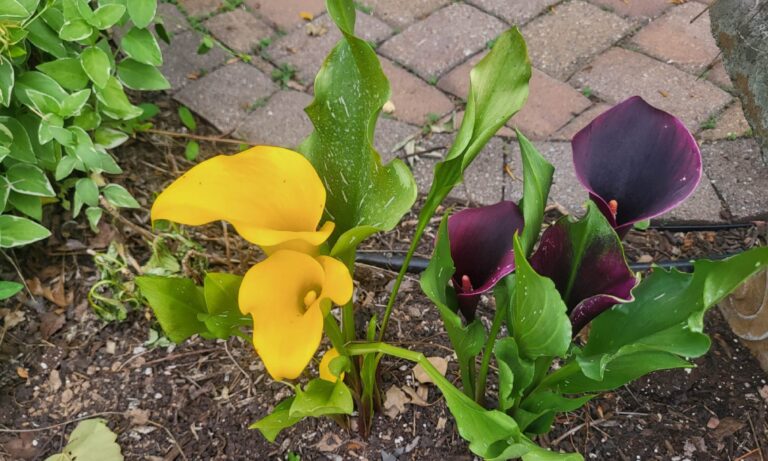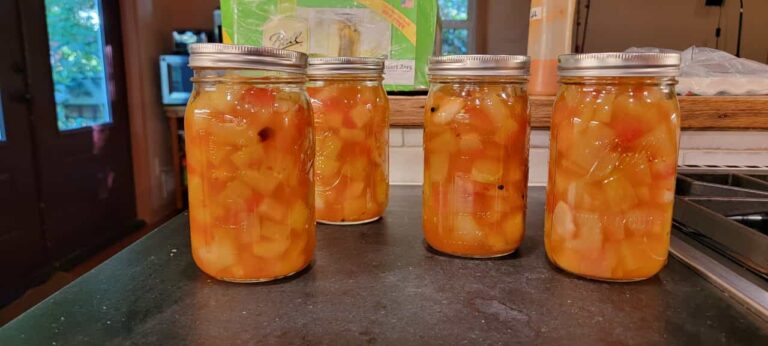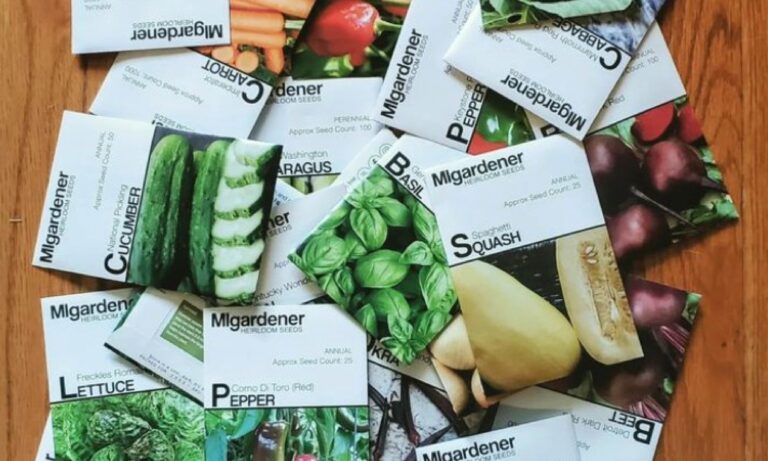Seasonal Flowers Around Me
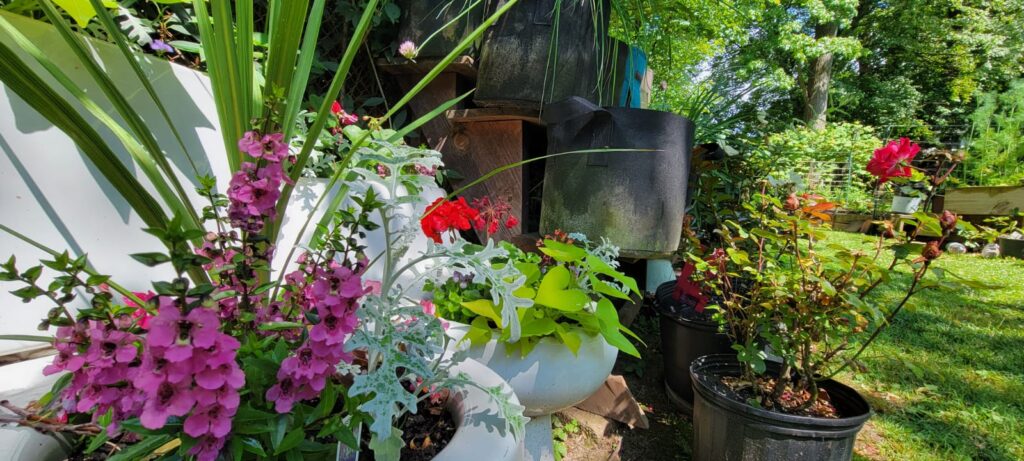
The northern latitudes in North America offer a stunning array of seasonal flowers all through the year, whether it’s the emergence of spring, the vivid hues of summer, the breathtaking leaves of fall, or the tenacity of winter blooming. Residents and visitors can immerse themselves in the ever-changing tapestry of floral wonders that beautify the Garden State, from public gardens to private landscapes.
All through the year, a wide variety of seasonal flowers bloom in this area. As winter gives way to spring, a beautiful variety of flowers bloom in. Crocuses and daffodils, which cover the landscapes in the early spring, are followed by the delicate petals of cherry and magnolia trees. Lilacs, tulips, and hyacinths perfume the air with their pleasant scents while painting gardens and parks with their vivid hues.
This area blossoms with blossoming flowers as summer approaches. Roses, lilies, dahlias, and sunflowers are abundant in the gardens all around, producing a rainbow of colors. Public and private gardens are decorated with delicate cosmos, jovial zinnias, and exquisite daylilies, drawing pollinators and visitors alike.
Here is an introduction to some commonly cultivated flowers
Clematis
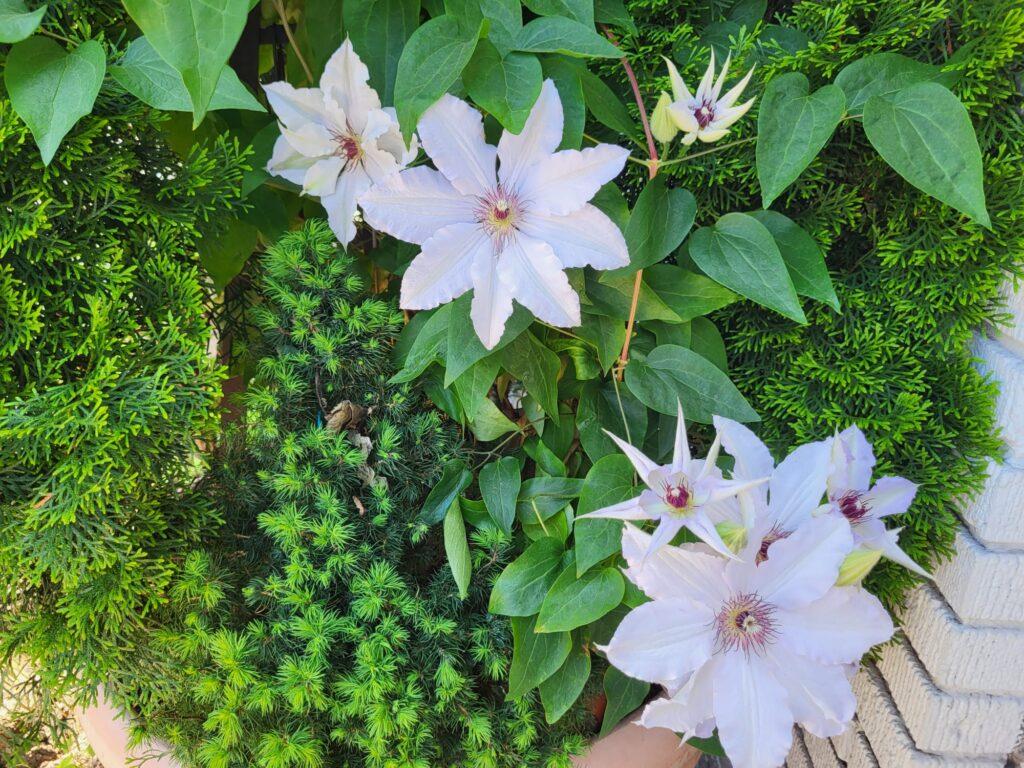
Ranunculaceae, the family of buttercups that includes clematis, is a genus of flowering plants with roughly 300 species and countless varieties. Its origin is China and Japan. Due to their magnificent blossoms and propensity to climb arbors, trellises, and fences, these lovely and adaptable vines are well-liked by gardeners all over the world. This adds vertical interest to landscapes.
Flowers on clematis vines come in a wide variety of shapes, colors, and sizes. A profusion of colorful, showy blooms in hues of purple, pink, blue, red, white, and even yellow are produced by them. The flowers can be solitary or double, and they can have different petal patterns and shapes, which together make for an attractive display. Some types even have a lovely scent, which adds to their allure. Their bloom time ranges from late spring to fall, depending on the type and variety.
CornFlower
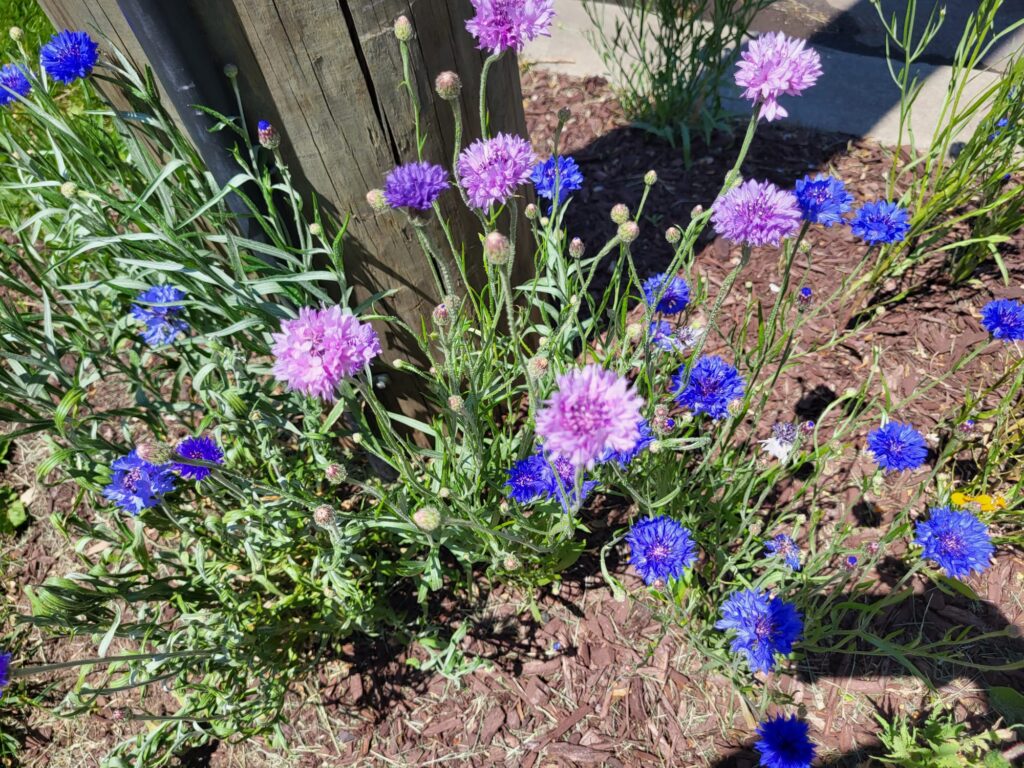
Centaurea cyanus, or cornflower, is a lovely and well-known wildflower that adorns fields and gardens with its delicate beauty. This annual plant, which is also known as the bachelor’s button, is a member of the Asteraceae family and is indigenous to Europe. The cornflower, with its vivid blue petals, has come to represent innocence and purity.
This plant has long, slender stems that can grow up to 36 in (90 cm) in height. Its gray-green lance-shaped leaves make an attractive contrast to the vivid blue blossoms. Although blue is their most frequent color, cornflowers also come in pink, white, and purple tones.
These flowers bloom in the summer, producing profusions of beautiful flowers atop each stem. Each bloom has a central disc that is encircled by overlapping petals, giving it a lovely fringe-like appearance. Cornflowers are popular among gardeners and flower lovers due to their complex structure and vibrant color.
In addition to being aesthetically pleasing, cornflowers draw a wide range of pollinators, such as bees, butterflies, and hummingbirds. Their nectar-rich blossoms provide a crucial food source and boost the ecosystem’s overall biodiversity. These flowers have a long tradition of being used in food and medicine. Their petals have been used to create floral extracts, herbal beverages, and colors. They are used in salads as well, where they give a splash of color and a soft, slightly sweet flavor.
Eastern Daisy Fleabane
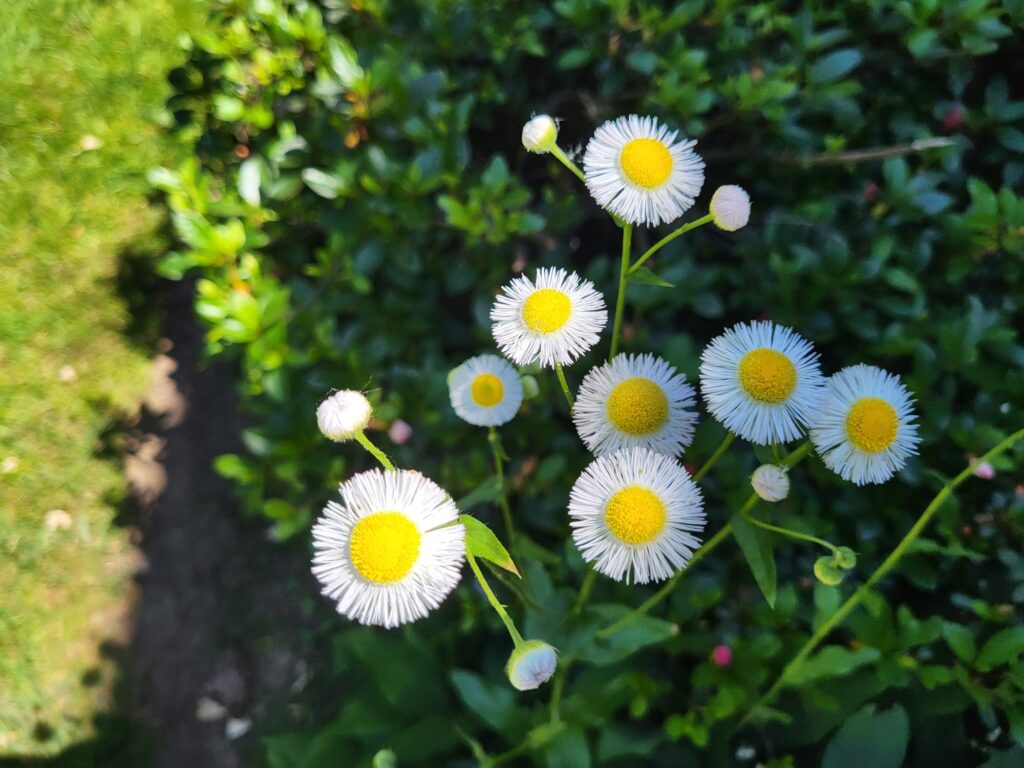
The fascinating flowering plant known as Eastern Daisy Fleabane, or Erigeron annuus in botanical terms, is a member of the Asteraceae family. This perennial herb grows naturally in fields, meadows, at the sides of roads, and other disturbed areas in eastern and central North America. A distinctive and endearing appearance can be found in these flowers. It usually reaches a height of 1 to 3 feet and has slender stems covered in small, daisy-like blooms. The flowers have bright white or light pink petals encircling a golden disk in the center. These flowers stand out strikingly against the plant’s tall, narrow leaves that are serrated and covered in tiny hairs.
These flowers has the ability to draw in a wide variety of pollinators and it is one of its amazing qualities. The plant’s nectar-rich blossoms attract a variety of insects, including bees, butterflies, and beetles.
The robust and adaptable Eastern Daisy Fleabane is a species. It is renowned for thriving in both direct sunlight and light shade. The plant’s adaptability to a variety of soil types, such as clay, loam, and sandy soils, further increases its adaptability. It may be easily incorporated into a variety of garden designs thanks to its resilience and versatility, making it a favorite among gardeners and landscape designers.
Eastern Daisy Fleabane has a long history of medical purposes in addition to being beautiful. The plant’s leaves and blooms have been used in the treatment of a variety of illnesses by practitioners of traditional herbal medicine. It has been used as an expectorant, diuretic, and treatment for skin and stomach disorders. This is an alluring plant that combines aesthetic value, ecological importance, and therapeutic benefits. It is a prized addition to both natural landscapes and cultivated gardens thanks to its toughness, flexibility, and appeal.
Gazania
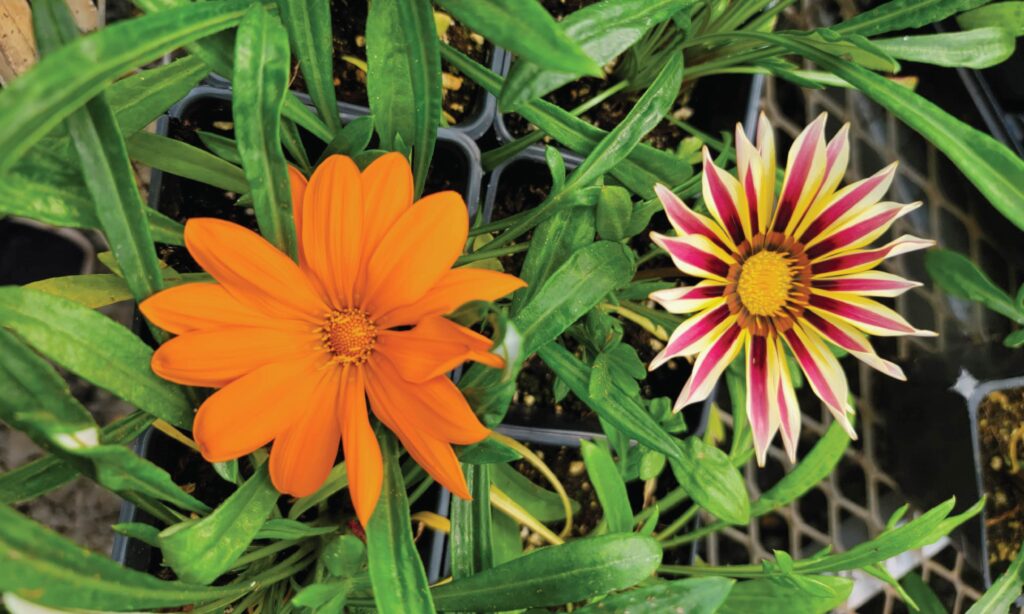
The stunning and colorful flowering plant known as Gazania Fleabane, scientifically as Gazania rigens, is a member of the Asteraceae family. This perennial herbaceous plant, which is native to South Africa, has become well-known throughout the world for its gorgeous flowers and resistance to heat and drought. It has developed thick leaves that store moisture as a result of its adaptation to arid areas, enabling the plant to endure harsh conditions. This quality makes it a well-liked option for xeriscaping, a landscaping strategy that emphasizes water saving. The blossoms have a stunning variety of colors, including vivid yellow, orange, red, and pink tones. The petals frequently bear elaborate patterns that enhance their aesthetic attractiveness.
Another characteristic of this plant is how easily it spreads and how little maintenance it requires. It is suitable for ground cover or border plantings since it grows into dense clusters or mats. The plant’s extensive root system also aids in preventing soil erosion.
Traditional medicine has made use of gazania fleabane in addition to its decorative appeal. The plant’s leaves and roots have been used by some native communities as cures for a variety of illnesses, including respiratory problems and digestive problems.
Hibiscus
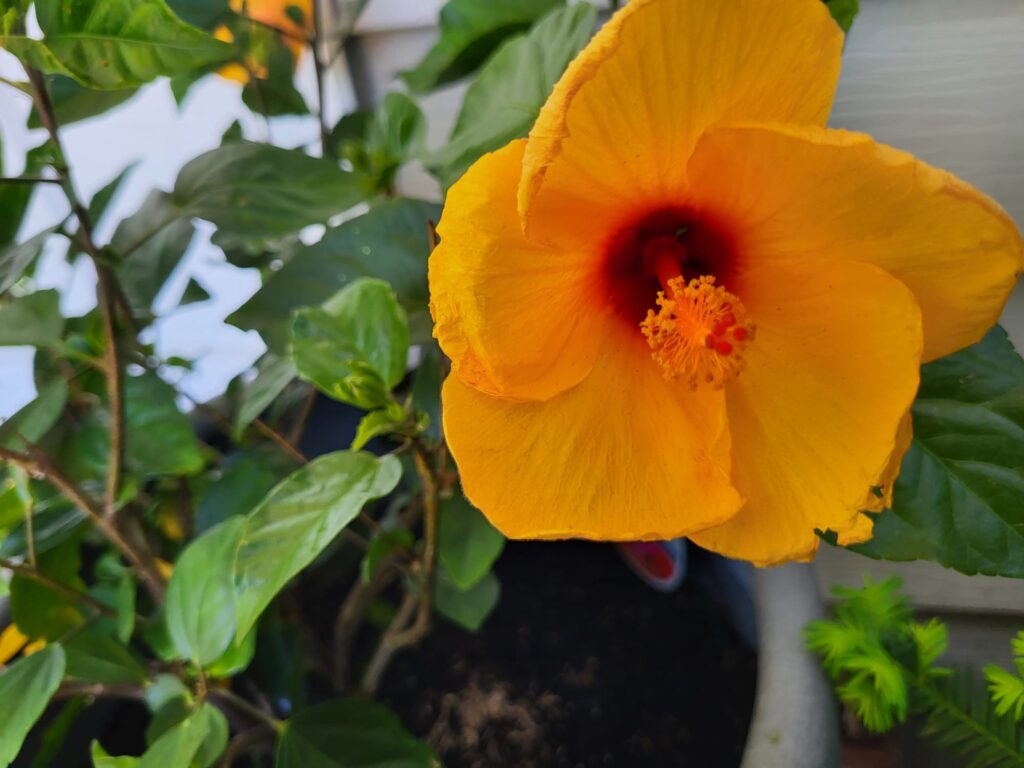
The enormous, spectacular flowers of hibiscus bushes are recognized for their brilliant colors, which include shades of red, pink, orange, yellow, and even white. The flowers have a distinctive funnel or trumpet shape with several petals extending outward from a central stamen column. They frequently include elaborate designs and striking colors, drawing observers’ attention.
The Hibiscus genus of flowering plants in the Malvaceae family includes a wide range of species that are prized for their beautiful blossoms and decorative value. Asia, Africa, and the Pacific Islands are just a few of the continents where these tropical or subtropical shrubs are indigenous. Some species, including Hibiscus sabdariffa, have petals and calyces that are frequently included in herbal teas and other culinary preparations. These plant components have a tart flavor and are well known for their possible health advantages. Additionally, hibiscus blossoms have been employed in traditional medical practices, where they are thought to have therapeutic qualities and are used as treatments for a variety of diseases.
Because they are usually simple to cultivate and care for, hibiscus plants are a popular selection for gardens and landscapes. They need well-drained soil and do best in warm, sunny locations. Hibiscus plants bring a sense of the tropics to gardens with their eye-catching blooms and deep green foliage, luring bees and butterflies as well as pollinators like beetles.
Petunia
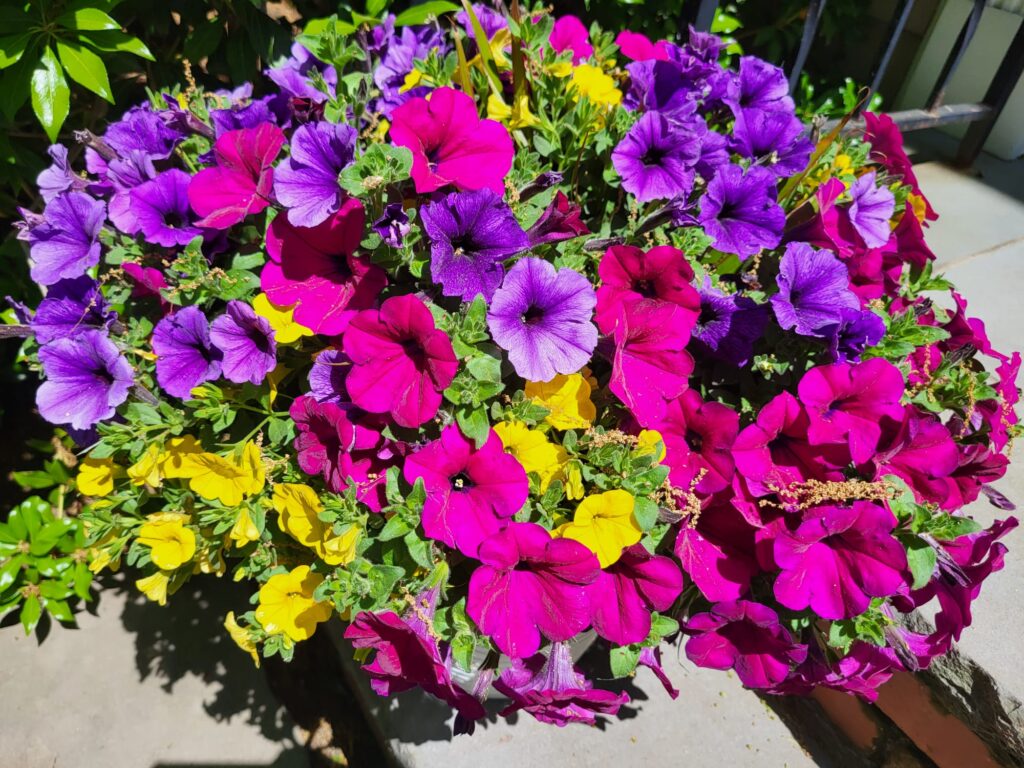
Popular blooming plants in the Solanaceae family include Petunias. These South American native herbaceous perennials have gained popularity as decorative plants all over the world. Petunias have established themselves as a standard in gardens, hanging baskets, and containers because of their broad variety of colors, compact growth habits, and the profusion of blossoms.
The extraordinary floral variety of petunias is one of their distinguishing characteristics. They are available in a variety of vivid colors, including white, pink, purple, red, and even multi-coloured versions. The flowers are decorated with elaborate patterns and markings and can be single, double, or ruffled. Petunias make a magnificent flower show that draws attention and injects a splash of color into any environment, whether they are flowing down from hanging baskets or covering garden beds.
These flowers are renowned for being simple to grow and requiring little upkeep. They can take moderate shade but prefer full sun, making them adaptable to a variety of growth environments. They require frequent watering to maintain an equal moisture level in the soil and flourish in well-drained soil. They are excellent for summer gardening since they can survive dry spells and moderate temperatures. Petunias may constantly bloom throughout the growing season if deadheading is done regularly, giving a prolonged time of floral splendor.
Alliums
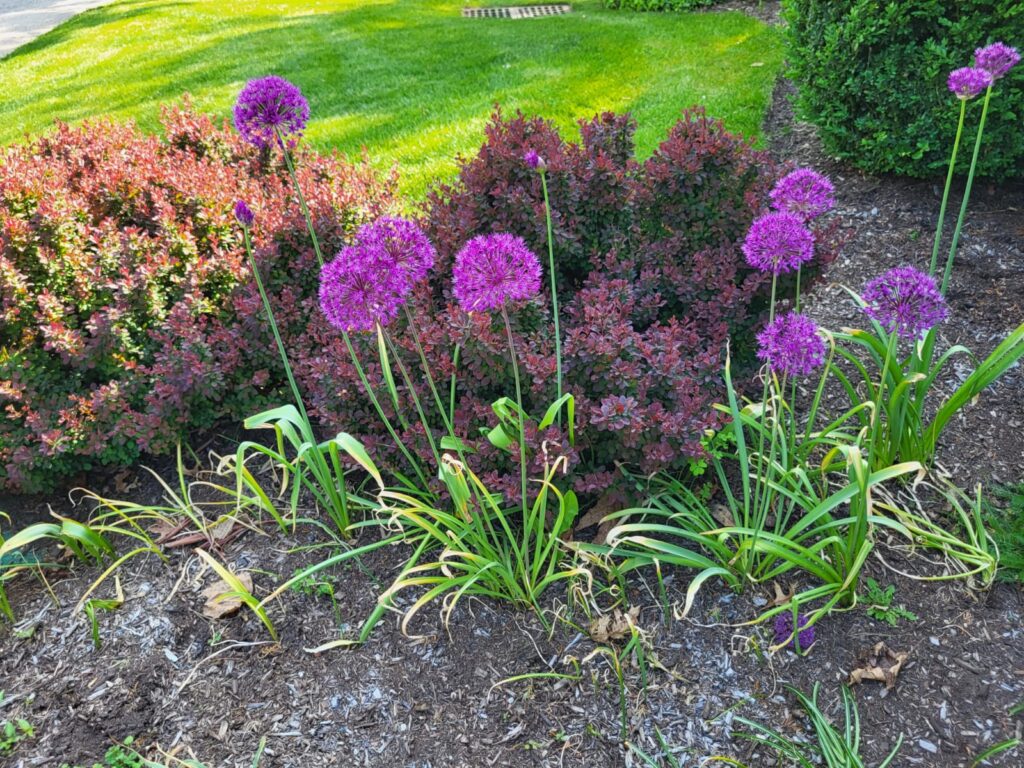
Alliums have hundreds of species, and they fall in both ornamental and edible varieties. The ornamental alliums have a lot to offer as pollinators in spring and fall gardens. They are fast-growing, tall, and have round flower heads composed of dozens of star-shaped flowers. On the other hand, the edible alliums include onions, leeks, garlic, and shallots. Surprised?
Allium blossoms can range in size from tiny, delicate blooms to enormous, striking spheres, and they come in a variety of colors, including purple, pink, white, and yellow. Alliums unique flower heads give landscapes and floral displays a dramatic and architecturally interesting feel.
Alliums are prized for their aroma in addition to their decorative significance. Numerous species have enticing aromas that can range from onion-like to sweet and flowery and can draw pollinators like bees and butterflies. These already alluring plants gain even more attraction from their peculiar perfume. They enjoy full sun exposure but may grow in a range of soil types as long as it is well-drained. They can withstand severe weather because of their resilience, which makes them suited for various climates.
Alliums are adaptable plants that may be included in many garden layouts. They look good mixed in with other perennials and shrubs, planted in large groups, or as focal pieces. They make wonderful cut flowers as well, giving floral presentations a distinctive flair.
Hardy Gardenia Azalea
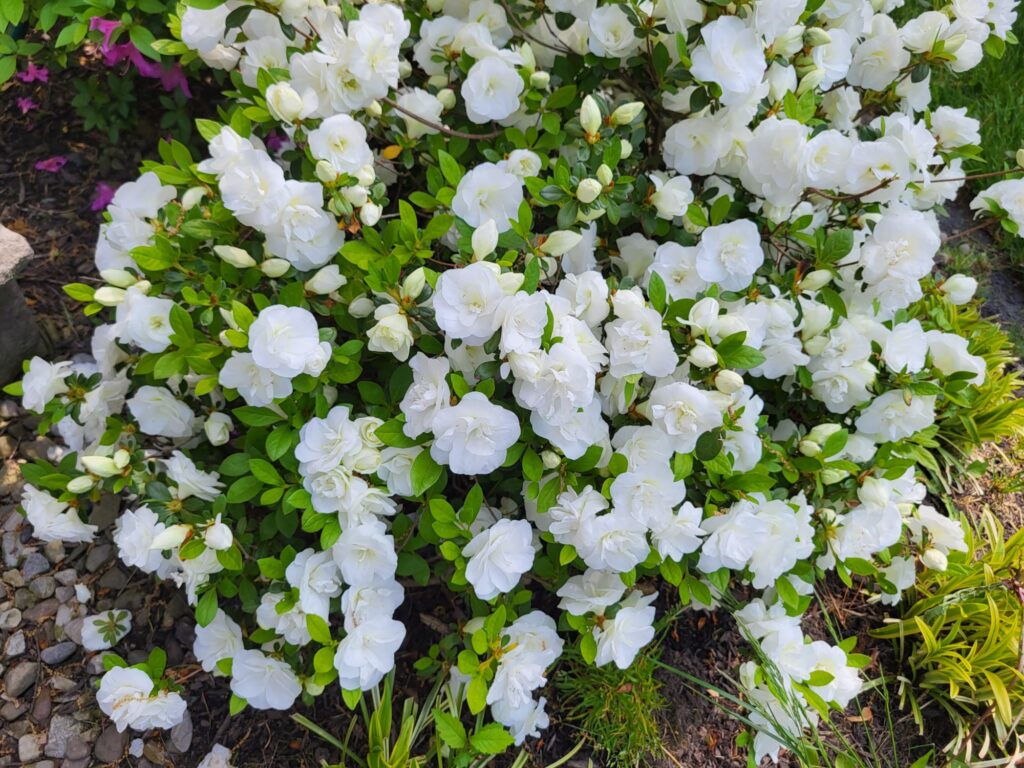
The Hardy Gardenia Azalea is a prolific spring-blooming rhododendron. It does lack the fragrance of gardenias but produces beautiful pure white double form blooms which covers the shrub. It blooms all spring and is small and compact shrub that only maintains a height of 2-4 feet. This plant was specifically engineered to survive lower temperatures and flourish in areas where regular gardenias struggle, in contrast to its more delicate siblings.
This breed differs from other gardenia cultivars in that it can withstand lower weather. While typical gardenias prefer warmer areas, this resistant variety may survive under the right conditions in temperatures as low as -10°F (-23°C) and because of this, gardeners in areas where gardenias were previously difficult to cultivate are turning to it as a preferred option.
These flowers appreciate a place with partial shade or filtered sunshine and flourish in well-drained soil. They may be cultivated in pots, in garden beds, or as hedges. They give any landscape a sense of class and refinement with their lovely leaves and fragrant blooms. The lustrous, deep green foliage of this evergreen shrub provides as a sophisticated backdrop for its stunning, creamy-white blossoms.



